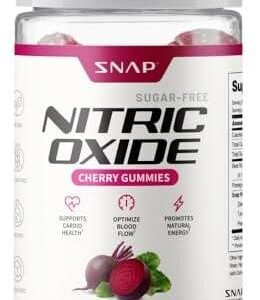In today’s fast-paced world, finding an efficient and effective workout routine can be a challenge. With countless exercise programs and fitness trends vying for our attention, it can be easy to feel overwhelmed. However, one approach consistently stands out for its versatility and ability to deliver results: full-body workouts. Designed to engage multiple muscle groups in a single session, full-body workouts maximize your effort while saving you time. Whether you’re a seasoned fitness enthusiast or just embarking on your health journey, understanding the myriad benefits of full-body training can help you optimize your routine, enhance your performance, and achieve your fitness goals more effectively. In this article, we’ll explore the key advantages of full-body workouts and provide insights on how you can integrate them into your weekly regimen for optimal results.
Table of Contents
- Understanding Full-Body Workouts and Their Unique Advantages
- Key Components of an Effective Full-Body Workout Routine
- How Full-Body Workouts Enhance Metabolism and Promote Fat Loss
- Incorporating Full-Body Workouts into Your Weekly Fitness Plan
- Closing Remarks
Understanding Full-Body Workouts and Their Unique Advantages
Full-body workouts offer a comprehensive approach to fitness that is perfect for individuals with busy schedules or those looking to streamline their training routine. These workouts engage multiple muscle groups during a single session, maximizing efficiency and time effectiveness. The unique benefits include:
- Time-saving: By targeting all major muscle groups in one workout, you can reduce the frequency of training days needed to achieve strong results.
- Increased calorie burn: Engaging more muscles simultaneously boosts metabolism, aiding in fat loss and improving overall body composition.
- Improved functional fitness: Full-body workouts often incorporate compound movements, enhancing daily activities and overall strength.
- Balanced development: This approach minimizes the risk of muscular imbalances, helping to promote better posture and joint health.
Moreover, diversifying your exercises within full-body routines can lead to greater adherence and enjoyment. This variety not only keeps your workouts stimulating but can also prevent plateaus. Below is a simple comparison of common elements found in full-body workouts versus split training:
| Aspect | Full-Body Workouts | Split Training |
|---|---|---|
| Frequency | 3-4 times per week | 5-6 times per week |
| Time Commitment | Shorter sessions | Longer sessions |
| Muscle Engagement | Entire body in one go | Specific muscle groups |
| Caloric Burn | Higher per session | Variable |
Key Components of an Effective Full-Body Workout Routine
An effective full-body workout routine encompasses several essential elements that work synergistically to optimize strength, endurance, and flexibility. Compound movements form the foundation of such routines, engaging multiple muscle groups simultaneously. Exercises like squats, deadlifts, and push-ups not only promote overall strength but also enhance functional fitness. Incorporating variety in resistance training—such as using free weights, resistance bands, and bodyweight exercises—keeps the routine dynamic and challenging, preventing plateaus and boredom.
Another critical aspect is the inclusion of aerobic training, which boosts cardiovascular health and aids in fat loss. Activities such as jumping jacks, burpees, or even a brisk jog can be integrated into circuits or intervals for added intensity. Flexibility work, like stretching or yoga, is equally important for muscle recovery and injury prevention. To guide your timing, consider the following table for a balanced session:
| Exercise Type | Duration | Frequency |
|---|---|---|
| Strength Training | 30 minutes | 3 times per week |
| Aerobic Exercise | 20 minutes | 2 times per week |
| Flexibility Work | 10 minutes | Daily |
How Full-Body Workouts Enhance Metabolism and Promote Fat Loss
Engaging in full-body workouts is a highly effective strategy for enhancing metabolism, which in turn promotes fat loss. When you target multiple muscle groups in a single session, your body requires more energy, not just during the workout but also in the recovery phase. This increased demand for energy leads to an uplift in your resting metabolic rate, meaning you’ll continue to burn calories long after the workout has ended. Here are some key benefits of full-body workouts for metabolic enhancement:
- Muscle Engagement: Involving various muscle groups simultaneously helps build lean muscle mass, which is crucial for a higher metabolic rate.
- Increased Heart Rate: Full-body routines often incorporate compound movements that elevate your heart rate, further increasing calorie burn.
- Time Efficiency: Achieving a comprehensive workout in less time means more consistency, leading to better results over time.
Incorporating full-body workouts into your fitness routine not only aids in fat loss but also contributes to an overall healthier body composition. With a balanced mix of strength training and cardio, these workouts help reduce fat while preserving muscle. Additionally, the variety in exercises keeps your workouts interesting and can prevent plateaus in weight loss. Consider these advantages of full-body workouts for your fat loss journey:
| Advantage | Description |
|---|---|
| Enhanced Hormone Response | Boosts hormones like testosterone and growth hormone, which aid fat loss. |
| Functional Strength Gains | Improves your ability to perform daily tasks effectively. |
| Flexible Scheduling | Easier to fit into a busy lifestyle with shorter, more impactful sessions. |
Incorporating Full-Body Workouts into Your Weekly Fitness Plan
Integrating full-body workouts into your weekly fitness plan can be transformative, offering a balanced approach that targets multiple muscle groups in one session. With busy schedules often impeding regular workouts, full-body sessions streamline your routine by maximizing efficiency. Rather than focusing on specific body parts each visit to the gym, these workouts provide a holistic engagement with your body’s musculature, ensuring that all major areas receive attention. You can incorporate them into your regimen in various ways, such as:
- Strength training: Use compound movements like squats, deadlifts, and presses.
- Cardio integration: Combine high-intensity intervals for metabolic boosts.
- Flexibility components: End with stretches to enhance recovery and maintain range of motion.
Furthermore, scheduling full-body workouts 2-3 times a week can lead to optimal results, allowing adequate recovery while still pushing for progress. Consider creating a simple weekly schedule to balance your activity levels, which could look like this:
| Day | Workout Type |
|---|---|
| Monday | Full-Body Strength |
| Wednesday | Cardio + Core |
| Friday | Full-Body Circuit |
| Saturday | Active Recovery (Yoga or Light Walk) |
This approach not only promotes physical fitness but also fosters a consistent workout habit. By blending various types of exercise into your plan, you enhance your enthusiasm and attain better results without the monotony often associated with traditional routines. With commitment and the right mix, you’ll soon notice improvements in strength, endurance, and overall well-being.
Closing Remarks
embracing full-body workouts is a powerful strategy for anyone looking to maximize their fitness journey. Not only do these comprehensive routines save time, but they also enhance overall strength, improve cardiovascular health, and boost metabolic efficiency. The versatility of full-body training allows you to engage various muscle groups and adapt your workouts to fit your personal goals, whether you’re a beginner or an experienced athlete.
Remember, consistency is key. By incorporating full-body workouts into your fitness regimen, you can enjoy the numerous benefits that come with them while keeping your routine fresh and engaging. So why wait? Start reaping the rewards of a balanced, effective approach to fitness today. Let the journey to a stronger, healthier you begin!
If you have any questions or would like to share your experiences with full-body workouts, feel free to leave a comment below. We’d love to hear from you! Happy training!





